-
Day of "solar" soldiers nears

Researches develop wearable light-weight solar panels which will allow soldiers to generate power in the field and reduce the need for batteries for their electronic devices; they will also establish a power supply that keeps electronic devices operational throughout the duration of missions
-
-
Storing CO2 underground to extract electricity
A team of scientists, led by the Berkeley Lab, hopes to become the first in the world to produce electricity from the Earth’s heat using CO2; They also want permanently to store some of the CO2 underground, where it can not contribute to climate change
-
-
Towing icebergs to provide fresh water for parched regions

A third of the world’s population — more than two billion people — lives without access to clean drinking water, and studies show that the situation will only get worse; a French innovator has an idea: towing icebergs from the Greenland and Antarctica to regions most in need of fresh water; a computer simulation shows this solution to be viable and affordable
-
-
Solar-based method to provide safe water
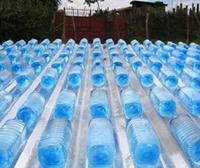
A revolutionary low-cost technique that uses sunshine to provide safe drinking water; solar disinfection (SODIS) of drinking water is an effective way of preventing water-borne diseases such as cholera, dysentery or polio — especially important in developing countries, where safe drinking water is often a precious rarity
-
-
Calls for more stringent standards in wake of increasing storm damage
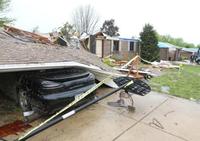
Researchers from a team funded by the National Science Foundation have examined some of last spring’s massive tornado damage and conclude in a new report that more intensive engineering design and more rigorous, localized construction and inspection standards are needed to reduce property damage and loss of life
-
-
Identifying Canadians from their date of birth, postal code
Researchers find that 97 percent of Canadians can be uniquely identified from their date of birth and postal code; this means that if these to items of information, plus gender, exist in any database, even if it has no names or other identifying information, it would be possible to determine the identity of those individuals birth
-
-
Wire pops lock certified for US defense facilities
The Access Control E-Plex 5800 lock from Swiss company Kaba was described as the first lock certified as meeting new DHS requirements for coded access that keeps track of which contractors or federal workers open which doors; at the DefCon event in Las Vegas, a security expert demonstrated how this high-security lock, certified for use in sensitive U.S. government facilities, can be easily opened with just a piece of wire
-
-
Sector Report for Monday, 8 August 2011: Infrastructure protection
This report contains the following stories.
Plus 1 additional story.
-
-
Boeing and Siemens join forces to protect smart grid
In a bid to improve efficiency and security for the Pentagon’s electrical “smart grid,” defense giant Boeing has teamed up with German technology conglomerate Siemens to develop new technologies
-
-
New desalination technology to help solve world's water shortage
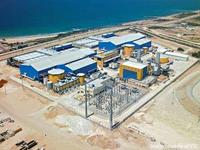
Over one-third of the world’s population already lives in areas struggling to keep up with the demand for fresh water. By 2025, that number will nearly double; a new study argues that seawater desalination should play an important role in helping combat worldwide fresh water shortages once conservation, reuse, and other methods have been exhausted
-
-
Market forces to help reduce emission, increase storage of CO2
New computer modeling work shows that by 2100, if society wants to limit carbon dioxide in the atmosphere to less than 40 percent higher than it is today, the lowest-cost option is to use every available means of reducing emissions — including using forests to store carbon
-
-
Dow fined $2.5 million for violations at Michigan chem plant
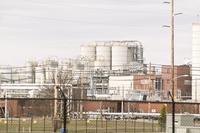
Due to environmental and safety violations at its chemical plant in Midland, Michigan, Dow Chemical will have to pay $2.5 million in fines; federal inspectors found that the chemical plant violated air, water, and waste regulations between 2005 and 2007
-
-
New device identifies unknown liquids instantly
Materials scientists and applied physicists have invented a new device that can instantly identify an unknown liquid; the 3D-nanostructured chip offers a litmus test for surface tension (and doubles as a carrier for secret messages); the researchers are currently developing more precisely calibrated chips and conducting field tests with government partners for applications in quality assurance and contaminant identification
-
-
NRC: far fewer people will die from U.S. nuclear plant meltdown
A yet-to-be-published report concludes that the number of deaths that would result from a nuclear plant core meltdown in the United States would be far lower than all other previous estimates; the reasons: first, only 1 to 2 percent of the cesium 137 in a reactor’s core would escape in a meltdown, rather than 60 percent assumed by previous estimates, and, second, the slow moving nature of such a disaster would allow for orderly evacuation of people from the reactor’s vicinity
-
-
Swedish police arrest man for building nuclear reactor in his kitchen
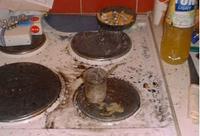
A 31-year old Swede was arrested after ahothorities discovered he was preparing to build a nuclear reactor in his apartment’s kitchen; he already had some radioactive material — ordered from overseas — and material acquired by taking apart a domestic fire alarm; he was discovered when he called the Swedish Radiation Authority to inquire whether it was legal to construct a nuclear reactor at home
-
More headlines
The long view
Water Wars: A Historic Agreement Between Mexico and US Is Ramping Up Border Tension
As climate change drives rising temperatures and changes in rainfall, Mexico and the US are in the middle of a conflict over water, putting an additional strain on their relationship. Partly due to constant droughts, Mexico has struggled to maintain its water deliveries for much of the last 25 years, deliveries to which it is obligated by a 1944 water-sharing agreement between the two countries.
Trump Is Fast-Tracking New Coal Mines — Even When They Don’t Make Economic Sense
In Appalachian Tennessee, mines shut down and couldn’t pay their debts. Now a new one is opening under the guise of an “energy emergency.”
Smaller Nuclear Reactors Spark Renewed Interest in a Once-Shunned Energy Source
In the past two years, half the states have taken action to promote nuclear power, from creating nuclear task forces to integrating nuclear into long-term energy plans.
Keeping the Lights on with Nuclear Waste: Radiochemistry Transforms Nuclear Waste into Strategic Materials
How UNLV radiochemistry is pioneering the future of energy in the Southwest by salvaging strategic materials from nuclear dumps –and making it safe.
Model Predicts Long-Term Effects of Nuclear Waste on Underground Disposal Systems
The simulations matched results from an underground lab experiment in Switzerland, suggesting modeling could be used to validate the safety of nuclear disposal sites.
